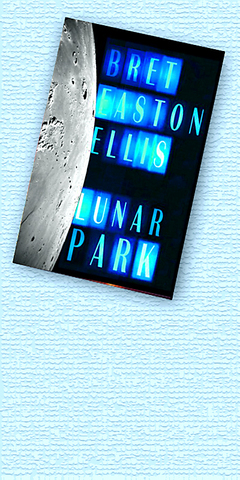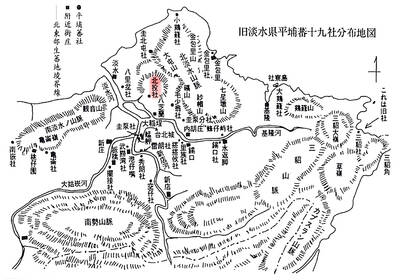Bret Easton Ellis has echoed his own fiction before. His 1985 debut, Less Than Zero, was a tawdry tale of collegiate excess written while he was an undergrad; soon after its success, he moved to New York City, where he partied with suitably 1980s excess of his own.
But with Lunar Park, he goes beyond mere echo. This eminently readable piece of metafiction blends Stephen King-style supernatural thrills with the kind of suburban angst that befits a man now in middle age. Lunar Park centers on a character named Bret Easton Ellis (whom I'll refer to as "Bret") and opens with a tightly crafted rehash of Bret Easton Ellis the real-life celebrity ("Ellis," from here on in). "I was on display," Bret recounts. "Everything I did was written about. The paparazzi followed me constantly. A spilled drink in Nell's suggested drunkenness in a Page Six item in the New York Post. Dining at Canal Bar with Judd Nelson and Robert Downey Jr., who co-starred in the movie adaptation of Less Than Zero, suggested `bad behavior' (true, but still)."
Fast-forward two decades. The semi-fictional Bret has written a few more books, including 1991's controversial yuppie slasher chronicle American Psycho (real), and gotten married to actress Jayne Dennis (fiction). He finds himself far from the bars and clubs of New York, having moved with Jayne, her daughter Sarah and their son, Robby, into "the anonymous suburbia of the Northeast." He teaches writing at the local college and works on a book.

There is the expected satire of the lives of those who live outside the bright lights, big city (fellow Brat Packer Jay McInerney is a character, too). At parent-teacher night a couple are shown their son's drawing of a platypus and told that an average platypus should look "less deranged." ("That could be the reason your child ends up with interpersonal difficulties," the teacher concludes.) And as in American Psycho and 1998's Glamorama, Ellis uses the precision of brand names -- the Thermador range, Sub-Zero fridge and Gaggia espresso maker that populate the Ellises' 840m2 manse, where Bret imbibes his caffeine in a "Hermes Chaine d'Ancre china cup" -- to evoke a certain status-conscious lifestyle.
But the big surprise of the book is the way Ellis segues from this sort of quotidian detail into a something-wicked-this-way-comes tale full of truly terrifying moments. He injects a hint of dread with hallway sconces that inexplicably flicker as Bret walks by, and then amplifies the unease with weird scratches in Sarah's room that couldn't possibly -- could they? -- have come from Sarah's stuffed bird.
Toss in a sociopath who acts out the murders from American Psycho, the disappearance of neighborhood boys and strange emails that arrive every night at the exact time of Bret's father's death, and Park adds up to a genuine horror story. As he did in Psycho, Ellis suggests that his narrator's account of events might be skewed by his consumption of Ketel One and Klonopin. But the reader is clearly meant to think that his fictional double is really experiencing every weird last word of it, and using some rather stiff nightcaps to help cope -- when, for example, his dead father's cream-colored Mercedes (exact license plates and all) starts showing up outside his house.
"I convinced myself I hadn't seen anything," Bret thinks, the morning after the Mercedes appears and he chases after shadows silhouetted against his son's window. "I had done this many times before ... I was adept at erasing reality."
Adept, that is, because of his chosen vocation. In one of many passages that could easily be part of a memoir instead of a novel, Bret muses: "As a writer, it was easy for me to dream up the more viable scenario than the one that had actually played itself out ... (T)his is what a writer does: his life is a maelstrom of lying."
There are more examples of such self-flagellation, which lends credence to critics who have called Ellis a moralist, a label he has also adopted in interviews.
In fact, Lunar Park might present the strongest argument yet for Ellis as moralist. While lawless characters of Zero drifted indolently through their lives, and Psycho and Glamorama used violence as a metaphor for the soullessness of the 80's, Park is less about an era than about the personal journey of a sinner, who must do penance for his or her transgressions. I won't spoil the plot by offering more details, but Ellis plumbs the depths of his character's troubled past and offers redemption -- with a price. It's a different kind of Ellis novel, offering the sort of restraint that might have saved Psycho from vilification and a level of character development absent from Zero.
"As a writer you slant all evidence in favor of the conclusions you want to produce, and you rarely tilt in favor of the truth," Ellis writes. Maybe so, yet Lunar Park tracks closer to a truth more readers will identify with than any of Ellis' previous books. His fictional alter ego still clings to vestiges of his old life (toking up at a party, dalliances with a graduate student), but the questions that haunt him are more universal -- his relationship with his father and his family, indeed, the very point of his existence. It's a shift that marks Ellis' maturity much more than the requisite move to the 'burbs.

Seven hundred job applications. One interview. Marco Mascaro arrived in Taiwan last year with a PhD in engineering physics and years of experience at a European research center. He thought his Gold Card would guarantee him a foothold in Taiwan’s job market. “It’s marketed as if Taiwan really needs you,” the 33-year-old Italian says. “The reality is that companies here don’t really need us.” The Employment Gold Card was designed to fix Taiwan’s labor shortage by offering foreign professionals a combined resident visa and open work permit valid for three years. But for many, like Mascaro, the welcome mat ends at the door. A

The Western media once again enthusiastically forwarded Beijing’s talking points on Japanese Prime Minister Sanae Takaichi’s comment two weeks ago that an attack by the People’s Republic of China (PRC) on Taiwan was an existential threat to Japan and would trigger Japanese military intervention in defense of Taiwan. The predictable reach for clickbait meant that a string of teachable moments was lost, “like tears in the rain.” Again. The Economist led the way, assigning the blame to the victim. “Takaichi Sanae was bound to rile China sooner rather than later,” the magazine asserted. It then explained: “Japan’s new prime minister is

NOV. 24 to NOV. 30 It wasn’t famine, disaster or war that drove the people of Soansai to flee their homeland, but a blanket-stealing demon. At least that’s how Poan Yu-pie (潘有秘), a resident of the Indigenous settlement of Kipatauw in what is today Taipei’s Beitou District (北投), told it to Japanese anthropologist Kanori Ino in 1897. Unable to sleep out of fear, the villagers built a raft large enough to fit everyone and set sail. They drifted for days before arriving at what is now Shenao Port (深奧) on Taiwan’s north coast,

Divadlo feels like your warm neighborhood slice of home — even if you’ve only ever spent a few days in Prague, like myself. A projector is screening retro animations by Czech director Karel Zeman, the shelves are lined with books and vinyl, and the owner will sit with you to share stories over a glass of pear brandy. The food is also fantastic, not just a new cultural experience but filled with nostalgia, recipes from home and laden with soul-warming carbs, perfect as the weather turns chilly. A Prague native, Kaio Picha has been in Taipei for 13 years and